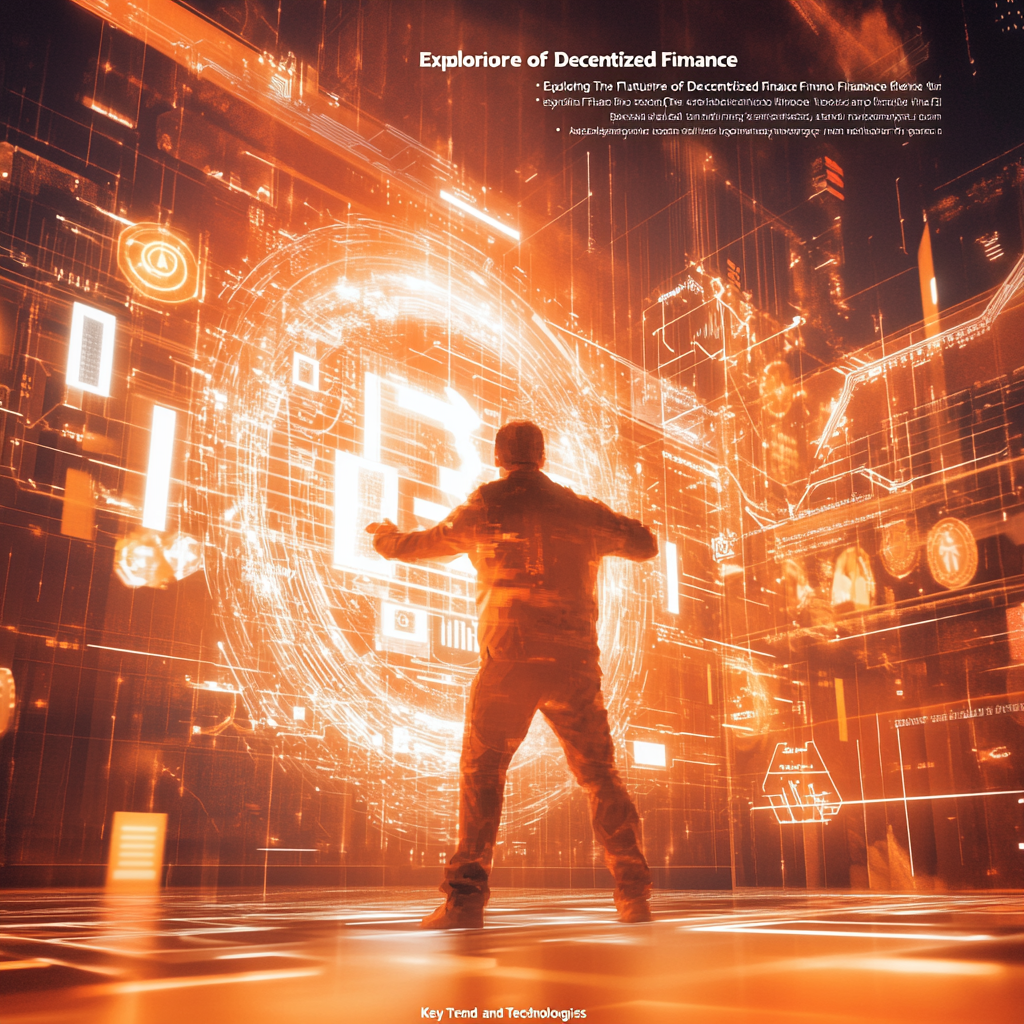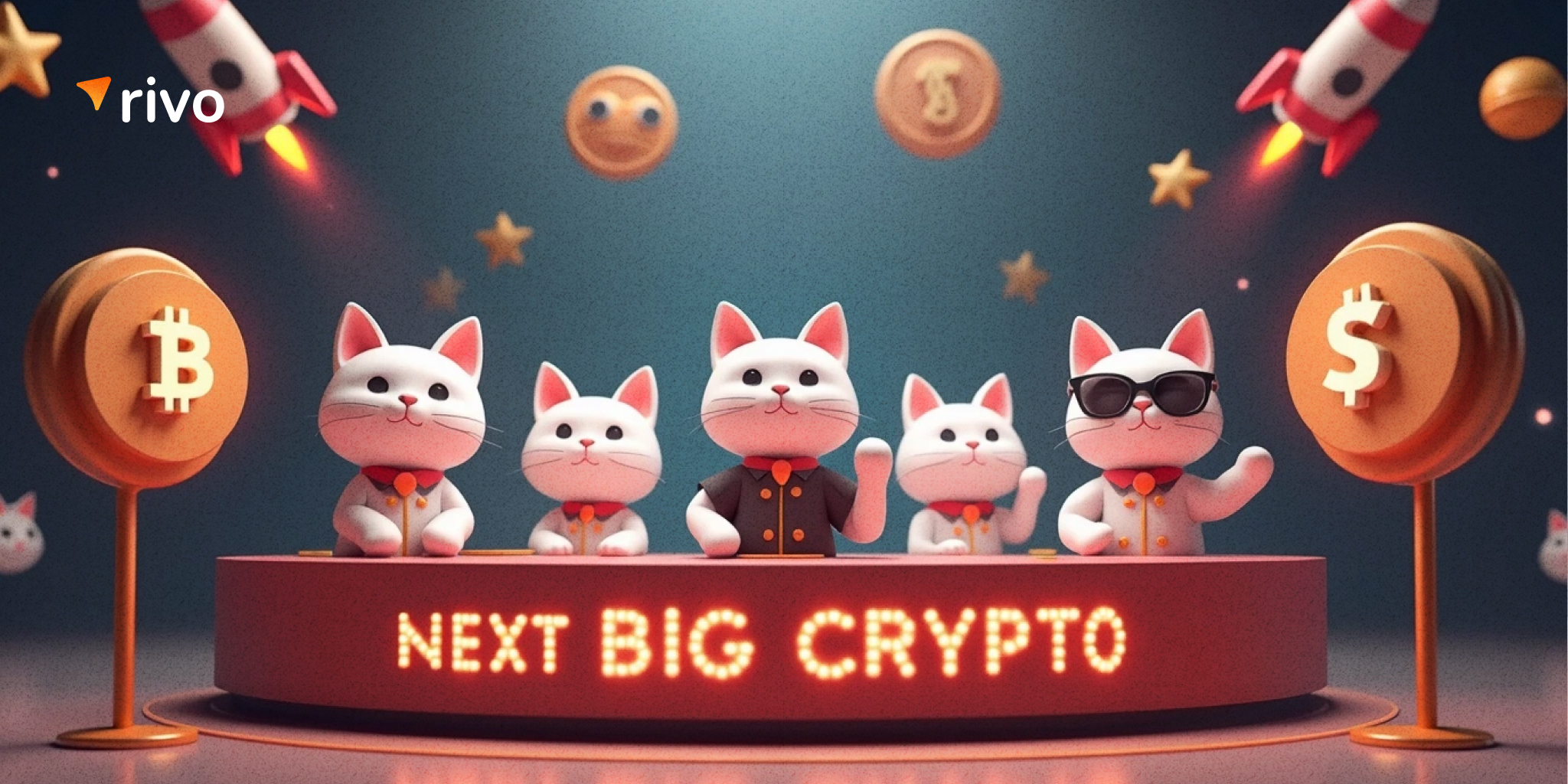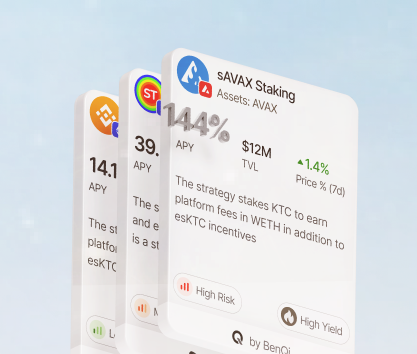Many experts, regardless of where they stand on the issue of cryptocurrencies, agree that centralized systems have many flaws that prevent them from benefiting everyone equally. The problem lies within the idea of centralization itself where institutions and individuals running them can have biases and egocentric motivations and quickly succumb to corruption. CeFi is a dead end for the global economy.
Decentralization looks like a perfect solution to many problems plaguing national monetary systems and economies. With the flexibility and sophistication of distributed blockchain ledgers, the participants of the economy can find a variety of ways to engage with the market fairly and effectively.
What are contemporary DeFi trends and technologies?
The concept of decentralization is quite simple. Imagine that someone is doing all the paperwork and writes everything in a ledger that only a handful of people can look into. Who can prevent this person from simply erasing some entries or adding new ones? This is the main issue with CeFi. Instead of doing this, you could have people write everything down in their personal ledgers and anonymously compare them to verify the integrity of operations.During the last decade, the DeFi ecosystem has grown by a large margin. Today, we have a massive number of different platforms operating on over 30 different chains that have at least some degree of relevance. The popular wallet MetaMask alone can interact with 17,000 different protocols and Dapps.
Current DeFi trends
One of the biggest ongoing developments in the sector is the creation of novel investment tools that cater to a wide audience of potential investors. Conservative types are intrigued by PoS networks offering rewards for staking. For instance, Ethereum generates up to 11% APY for stakers with an average return of 4% which is in line with the US treasury bond yield (4.11% APY).
Riskier options include liquid staking followed up with taking out a loan using staked tokens as collateral or yield farming. Even those who prefer gambling to investing can find wildly volatile or extremely risky things like degen farming. This trend toward expanding the current lineup of useful products is clear as day.
Here are other interesting trends in the sector:
- Focusing on cross-chain technology. Bridges are some of the most popular applications allowing investors to quickly move funds from one chain to another using centralized authorities like oracles to ensure that the swapping is conducted without any issues and errors. It is also possible to build bridges without using centralized entities. For example, TeleportDAO is working on the teleBTC token allowing users to wrap layer 1 coins and move them to other chains.
- Evolving blockchain networks. It has been quite a journey to watch how different blockchain projects mature while choosing completely different development paths. For instance, the Bitcoin community is doubtful about changing the consensus mechanism or altering the technology in meaningful ways making it hard for developers to build on top of the layer 1 network. While some projects like Stacks exist and allow for wrapping and even staking of BTC, it is still a clunky chain to work with. On the other hand, Solana makes deployment of Dapps easy and cheap. It sounds great but also allows for the proliferation of scams and rug pulls.
- Prioritizing security over efficiency. There is a triangular problem with blockchain. We have scalability, security, and convenience that must be balanced. If we improve security, we will inevitably reduce throughputs and general performance and convenience. If we focus on the latter, we have to compromise safety. It is clear that many protocols are choosing to focus on security measures and implement practices like external audits, bug bounties, and more. With over $3 billion of assets stolen from cross-chain bridges in 2022 alone, this trend is something that we all approve of.
The glorious DeFi innovation
Many experts believe that decentralization can be incredibly useful for the growing global economy that experiences deglobalization and reshoring simultaneously with growth. It is necessary for fracturing supply chains and rapidly collapsing international partnerships to be quickly replaced with something that can be flexibly adapted to changing geopolitical situations quickly unfolding in all regions of the world.
Decentralization offers a unique way for many businesses to operate in this chaotic environment by avoiding sanctions, building new supply chains, and rerouting payments without suffering from overly strict regulations.
Here are several ways in which DeFi innovates the global financial system:
- Getting rid of middlemen. Blockchain technology and smart contracts are extremely useful when it comes to building systems that are self-managed. Since all operations are conducted in a permissionless and trustless environment, you don’t need banks and other intermediaries to conduct operations. Remittances and servicing finances become cheaper and more accessible.
- Synthetic digital assets. By simply replicating behaviors of certain assets in the real world, the crypto industry creates a whole new financial market that can operate in parallel with existing stock exchanges. The best thing about this setup is that you don’t need middlemen to access a variety of popular assets by simply using Dapps.
- RWA tokenization. Real-world assets like commodities, stocks, real estate, infrastructure, and more can be tokenized to introduce fractional ownership and make many markets accessible to investors with limited capital. Some experts believe that the introduction of decentralization in many established ecosystems can significantly improve liquidity and participation.
The future of decentralized finance
Statista says that the global DeFi market will reach at least $70 billion by 2027. SkyQuest claims that the projected growth by 2031 is $48 billion. The commonly accepted estimated CAGR is 9.06%. These are conservative estimates. On the other hand, Grand View Research and Fortune Business Insights expect the market to reach $231 billion and $337 billion by 2030 respectively. Even more optimistic forecasts promise that the industry will grow to over $1 trillion by the end of the decade.
Interestingly enough, the number of actual active users of the DeFi sector is also different depending on who you ask. For instance, one of the on-chain analytical apps on Dune says that the number of unique wallets has increased by at least 239% in the first quarter of 2024. On the other side of the argument is the estimate by Statista showing that the number of users has decreased from the peak value of 7.1 million recorded in 2021.
Another important metric is the combined TVL which has been declining steadily since 2021. Statista says that the overall TVL has decreased to $87.5 billion in August 2024 which is 49.8% less compared to the ATH recorded in November 2021.
These two statistics paint a very peculiar picture of the industry. It is not in a systemic decline. On the contrary, we are observing the maturation of the sector with TVLs restructuring and users learning how to use Dapps efficiently. For instance, Lido is the leading liquid staking platform that has been increasing its TVL share gradually while many yield farming platforms have collapsed or lost a large number of users. As of the time of writing, Lido had a massive $22.62 billion TVL, a 63.7% year-to-year growth.
Emerging DeFi technologies
It is quite interesting to observe what is happening in the DeFi sector in 2024 as many interesting projects are taking off and attracting hopeful investors. We are seeing that the sector is shifting its focus toward cross-chain transactions and safer digital assets and derivatives. This trend is apparent across all blockchains.
Building fully decentralized bridges is the main priority for many developers. The demand for trustless and permissionless transactions between different ecosystems is quite high. Simultaneously, projects must pay attention to security issues and make sure that users feel safe sending their hard-earned digital currencies across the DeFi landscape. A good example of a project like that in development is the one by Rootstock that offers a decentralized bridge between RSK and Ethereum networks.
Here are other interesting concepts that are being fleshed out right now in the DeFi sector:
- KYC-compliant protocols. Regulation is something that some parts of the DeFi sector desperately need as they want to attract a very specific audience of people who would like to work with crypto but don’t feel safe enough to do so. If protocols like Singularity take off and manage to provide compliance solutions that are easily implementable, we will see an influx of new users.
- ZKP or zero-knowledge proof is also a hugely important technology that allows users to conduct operations discreetly without compromising the integrity of the blockchain. Adding a layer of safety and anonymity to the existing concept of decentralization can be incredibly impactful in the long run. Several blockchains are toying with ZKP implementation right now.
- Synthetic securities and RWA tokenization. We have already briefly covered these topics above. This sector of the DeFi ecosystem is rapidly evolving with protocols introducing all sorts of derivatives, tokenized real-world assets, synthetic tokens, and more. The biggest struggle right now is separating the chaff from the wheat and finding what actually works.
How top financial protocols operate
The DeFi sector is one of the most complex interconnected digital ecosystems that we have ever created. With all its moving parts operating independently while focusing on interoperability, the level of complexity has been growing steadily over the course of the last decade. Despite this overwhelming sophistication, individual protocols usually have relatively simple concepts and operate similarly to each other.
The basis for each of them is a tiny program that can operate autonomously and execute its code when certain conditions are met. Let’s start with them.
What are smart contracts?
Self-executing programs with terms of execution hard-coded into them are useful when developers need to build a fully autonomous system on the blockchain. Since they are fully automatic, users don’t need intermediaries and can conduct their activities as quickly as the underlying blockchain allows them to. These were developed in the early 1990s and the term was coined by Nick Szabo in 1998.
The DeFi ecosystem uses smart contracts everywhere to automate lending and borrowing, provide financing, create complex digital assets, and more. According to Avenga, protocols that were using these tiny programs managed to secure over $300 billion overall TVL in 2022. CoinDesk analysts believe that the global market will reach a massive $146 billion size by 2026 if everything goes according to plan.
Decentralized finance protocols
These smart contracts are the foundation of the whole ecosystem focused primarily on providing a non-custodian financial service to investors who want to stay in control of their finances. By introducing these self-executing programs instead of processing all operations in a centralized hub, these protocols deliver a novel experience that even seasoned capital holders have not yet engaged in.
The DeFi landscape has a massive variety of different types of platforms. The total number of tracked protocols exceeds 17,000 and you can find everything from places where you can borrow tokens to liquid staking pools allowing you to use staked assets. Let’s talk about some of these protocols.
Decentralized exchanges (DEX)
DEXes are the steamrolling machine pushing the growth of the DeFi ecosystem. These platforms allow users to quickly trade whatever they have on their wallet addresses without making them give up their control over tokens. Doing everything on your own is kind of scary for newcomers. Practice makes perfect in this particular case. Beating the fear of messing up a transaction and getting familiar with all the risks associated with trading cryptocurrencies is possible only after you start using everything regulalry.
A typical DEX is a protocol that has a smart contract that automatically conducts the swap of one asset for another. To ensure that these operations occur smoothly, they need liquidity provided by investors willing to lock in their assets in exchange for rewards. In some cases, protocols simply pay investors with a cut of their revenue. However, you can also find platforms that offer native tokens. For instance, you can go to Aerodrome (Base) and stake OVN-USD+ for up to 150% AERO reward APY.
Yield aggregators
Since the whole DeFi ecosystem is shifting toward investment options that allow users to receive passive income, the natural progression for the sector was to give birth to protocols that can improve the experience of an average investor. Yield aggregators like Beefy Finance, Yearn Finance, Sommelier, and many others can automate many processes such as restaking rewards, compounding, and portfolio balancing.
Similarly, other services that provide unique products also swarm the sector as satellites. For instance, you can go to Rivo.xyz to find several yield indexes that are specifically designed to work for newcomers who feel intimidated by the complexity of the crypto industry.
DeFi risks and challenges
Despite many advantages that decentralization brings to the table, investors face many risks uniquely associated with the DeFi sector. Hacker attacks, coding errors, proliferating scammers, and a variety of other issues are still plaguing the industry. While many attempts at mitigating these problems have been made by the community, we are still dealing with dangers that simply do not exist in CeFi.
Here are some of them:
- Security issues. Smart contracts can be faulty due to poor development practices, unexpected technological difficulties, and problems with the underlying blockchain infrastructure. According to Chainalysis, over $3.1 billion was lost to hacks in 2022 with one of the biggest incidents on the Ronin Network leading to $625 million lost in a single attack.
- Regulatory gray zone. Cryptocurrencies are still poorly regulated even in countries where governments are proactively discussing how to deal with digital assets. The lack of consumer protection and issues related to taxation can be quite frightening to a newcomer who would join if there were rules and laws that dictate how market participants should behave.
- Market volatility. Even the best-performing tokens like BTC, ETH, DAI, and many others are extremely volatile with prices fluctuating dramatically within weeks or even days of trading. For instance, during the “crypto winter” in 2022, over $1 billion in loans on various DeFi protocols had to be liquidated due to prices collapsing across the board.
- Issues with interoperability. The crypto ecosystem is still fragmented with different chains operating independently from each. Building bridges that work through oracles is a band-aid solution that won’t hold against the test of time. Unfortunately, we still do not have reliable DeFi bridges that would solve security issues.
- User experience is still lackluster on many DeFi protocols. Centralized institutions know that they need to be as convenient as possible to an average user to secure a sizeable market share. DeFi protocols often leave UX/UI on the back burner and don’t prioritize things like onboarding, education, guides, and intuitive navigation making it hard for newcomers to get started.
The main takeaway
In 2024, the DeFi ecosystem demonstrates resilience and adaptability with many protocols seeing TVL structures change to more crypto-heavy compositions. We are entering the age of maturation when many people who were not interested in DeFi tried to join, failed, and lost interest. Now, the landscape is being explored by investors who are prepared to use these advanced Dapps to their advantage. The future outlook of the sector seems bright!









